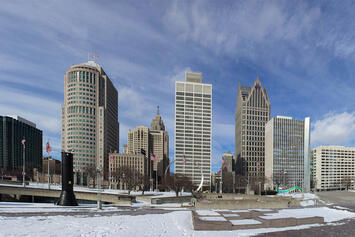
I’ve written a lot about how growing up in Detroit was instrumental in my desire to improve and revitalize cities. Watching a city being hollowed out and disgraced in the ‘70s and ‘80s can have that impact. Yet, ever since I can remember I’ve always felt slightly out of step with the people most interested in improving cities. I think I now understand why.
I’m not an urbanist. I’m an urban sociologist. I believe cities are first and foremost social creations, not economic ones, and I ascribe city changes, positive and negative, to the social infrastructure that establishes the city itself. I think this differentiates me from the urbanist contingent.
Here’s how I arrived at this.
As a teen, I thought Detroit’s problem was violent crime and the aggressive police response. It was, and still is, a major factor. However, I began to view crime as something that wasn’t the cause of the city’s decline, but a symptom. Intuitively I realized that aggressively attacking crime, treating the symptom, might lead to a better city, but it was no guarantee.
Like conventional wisdom at the time, I thought Detroit was being failed by an auto industry that was falling behind foreign automakers. The city needed a rejuvenated auto industry that could once again excel and dominate the auto market, at a minimum, or perhaps a new, more diversified economy that would deemphasize auto dominance. But that didn’t happen either.
I also saw Detroit as a city that lacked visual appeal. People were leaving, in my mind, because it wasn’t a beautiful city. The city was becoming disposable. I thought a city that became more attractive would bring more people; an incredible skyline, great open spaces, colorful neighborhoods would naturally attract newcomers. But when the city did things to improve the look of commercial districts, it hardly moved the needle.
I saw Detroit as a city that needed the right governmental policies to incentivize revitalization. However, it’s clear that the federal government and all 50 states were incentivizing the suburban explosion through highway extensions, infrastructure improvements, and financing policies that favored homeownership. It was working for those who could afford it, and that wasn’t changing, either.
But I’ve come to the realization that what fueled Detroit’s decline was none of those things, at least singly or directly. Crime? New York City’s crime began falling under the Koch and Dinkins administrations, before Rudy Giuliani’s law-and-order campaign brought him into office. Economy? It took quite a while, but eventually the Big Three automakers were able to close the quality gaps that plagued them for decades. Unfortunately, the Big Three still ceded their mid-century dominance over foreign automakers as the auto-buying public had widely expanded options. Automation played a big role in closing the quality gap, but came at the expense of tens of thousands of auto worker jobs.
Read the rest of this piece at The Corner Side Yard.
Pete Saunders is a writer and researcher whose work focuses on urbanism and public policy. Pete has been the editor/publisher of the Corner Side Yard, an urbanist blog, since 2012. Pete is also an urban affairs contributor to Forbes Magazine's online platform. Pete's writings have been published widely in traditional and internet media outlets, including the feature article in the December 2018 issue of Planning Magazine. Pete has more than twenty years' experience in planning, economic development, and community development, with stops in the public, private and non-profit sectors. He lives in Chicago.
Photo: L Walck, via Flickr under CC 2.0 License













Grew up in Detroit - during the Riots that fueled white flight.
I was 14 years old when I saw the smoke from Detroit going up in flames...
Over a decade ago we were working with the NW edge of Detroit with a very different model, with the leadership of the Brightmoor District. This was an approximately 600 acre area we sought as a new catalyst for a new rebirth.
By 'we' it was our planning research firm (we have designed over 1,700 developments in 48 states and 18 nations), Jamil Ford an architect in Minneapolis, Short Elliott & Hendrickson leadership (at the time)one of the largest Civil Engineering firms, and Skip Preble, an authority on financial modeling and projection.
This was a world class team and we would have changed the direction of regrowth of
Detroit. We were close to having a commitment, but Mr. Mays, the leader of the district left and the deal fell apart.
Afterwards, we met (at our time and costs) with Detroit's planning workshop which they kept Jamil and I waiting for hours only to be told there would be no interest in our concepts and ideas! Why? Because in many ways what we proposed is quite the opposite of their faith in New Urbanism. Judge for yourself by reading the plan:
https://www.dropbox.com/scl/fi/3v74kt3slft3c6nkw5i1y/Brightmoor2013_11_1...